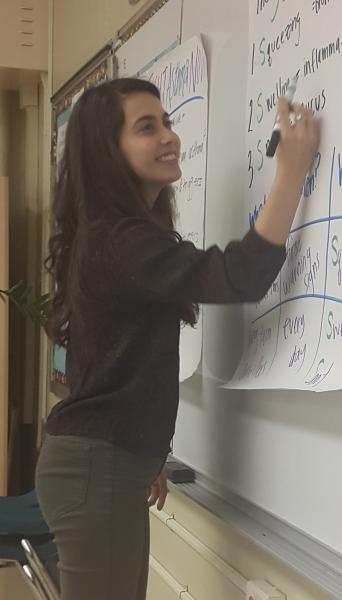
Most public health professionals have good intentions looking to address health disparities and bridge gaps in accessibility. Coming out of college, I carried a high head thinking both passion and knowledge would equip me with the skill set necessary to solve today's major health dilemmas. After serving in Chicago for the past few months I've begun to realize both the benefits and limitations of my occupation.
During asthma presentations we emphasize importance of teamwork. As trite and corny the expression goes, it carries great weight in the public health community. The reason Respiratory Health Association (RHA) developed different asthma presentations (for staff, parents, and students) is because we realize managing a child's asthma shouldn't only be the child's responsibility. There must also be shared contributions from both parents and staff. At the same time, students are the best advocates for their own health. As such, the biggest struggle thus far has been helping students understand the severity of the disease.
In fact, 9 deaths per day are attributed to asthma—a disease that is completely treatable and manageable. In the past year, 58% of children have experienced a severe asthma attack, while one third of those kids thought it was so bad they feared for their life. After presenting at schools where children have passed away from asthma attacks I began to understand the real danger behind uncontrolled asthma. And these were the kind of messages I wanted to reinforce in my lessons. After all, as easy as it was to teach and educate these kids on their triggers and treatment, I realized how much more significant it was to communicate importance of asthma management. Only then did my moody, reluctant teenagers decide to make real improvements towards leading healthy lifestyles. My initial naivety subsided as I learned knowledge is only as important as student's willingness to use it.
Alongside issues of participant communication lies the dilemma of cultural competence. Cultural obstacles and concerns of accessibility within our healthcare system have diluted positive effects of significant strides such as the Affordable Care Act and more. Having taught classes and trainings from West to South Chicago, I gained invaluable insight into healthcare barriers for minority students and families. I began to notice a pattern among participants. True to the statistics I present, the overwhelming majority of asthmatic children I see are Hispanic and African-American. In accordance, RHA had developed bilingual health materials and presentations. This was a significant step towards improving health literacy, engagement, and accessibility within the Hispanic community. Having presented these programs, I have been able to see a real impact. Many students were never educated on treatment for their child, much less on medicine names or triggers. However, their enthusiasm and personal stories are evidence of both their appreciation for knowledge and desire to learn. At the end of the day, the defining hallmark of our success has been positive feedback we receive from parents, students and teachers for whom the presentations resonated.
So as broad as addressing health disparities might be, I believe the first step is to improve health communication for our diverse participants. These efforts can run the gamut from bilingual health presentations to nationwide policy. While these have only been my experiences thus far, I hope to work with my RHA team towards developing even more effective talking points for teenage participants and I will continue to educate and empower all communities of Chicago to breathe easy!

This blog post was written by NHC Chicago member Ashley Joseph.
Ashley serves as an Asthma Educator at Respiratory Health Association (RHA).
